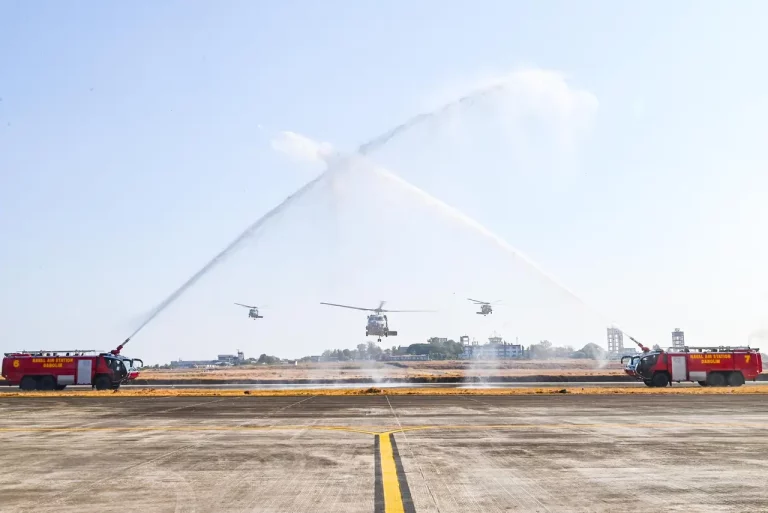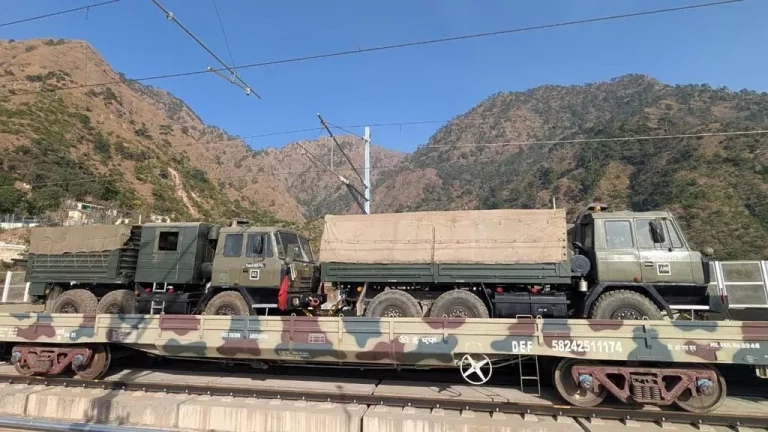India has made grave allegations against Pakistan amidst a surge of drone incursions and violations of airspace, which Indian authorities assert were aimed at military installations along the western border. Indian officials reported that Pakistan deployed between 300 and 400 drones across 36 locations, stretching from Leh to Sir Creek, during the night of May 8–9, 2025.
At a joint press briefing held by the Ministry of External Affairs and the Indian defense forces, Wing Commander Vyomika Singh from the Indian Air Force criticized the incursion, asserting it was a calculated move to challenge India’s air defense systems and gather sensitive intelligence. Singh further accused Pakistan of utilizing civilian airliners as cover during the drone operation, while neglecting to close its civil airspace during active military engagements—a move she condemned as “deeply irresponsible.”
In response to the drone attack, the Indian military acted promptly by employing a mix of kinetic and non-kinetic systems to neutralize the incoming threats. Initial forensic evaluations indicated that many of the intercepted unmanned aerial vehicles (UAVs) were Turkish-made Asisguard Songar drones, noted for their capabilities in real-time surveillance and strikes. Notably, Singh reported that an armed drone sent by Pakistan towards the Bathinda military station was detected and destroyed before it could cause any harm.
In retaliation, India executed armed drone strikes against four air defense sites within Pakistan, successfully destroying at least one radar installation. These strikes followed Operation Sindoor, a precision military campaign initiated in the early hours of May 7, which targeted nine terrorist camps across Pakistan and Pakistan-occupied Kashmir (PoK). This operation was a direct reaction to a terrorist attack in Pahalgam on April 22 that claimed the lives of 26 civilians.
Since these events, the Line of Control (LoC) and the International Border have experienced heightened military activity, with reports of heavy shelling in regions including Tangdhar, Uri, Poonch, Mendhar, Rajouri, Akhnoor, and Udhampur. There have been casualties among Indian Army personnel, and retaliatory actions have purportedly inflicted significant losses on the Pakistani side.
Civilian areas have also been affected, with reports indicating that a woman was killed and another injured during overnight shelling on May 8. This violence led to blackouts and the activation of air raid sirens in Jammu and nearby villages, as residents lived through a tense night filled with the sounds of artillery and air defense responses.
In light of the escalating tensions, India has implemented precautionary measures by closing its airspace and halting operations at 28 airports across the country. Contrarily, Pakistan has kept its civil airspace open, allowing commercial flights—including a Flynas Airbus A320 traveling from Dammam to Lahore—to operate perilously close to active military zones, raising serious concerns about aviation safety.
This incident is part of a troubling trend of increased drone incursions along the India-Pakistan border, with data indicating that drone sightings more than tripled between 2020 and 2022. Indian officials have consistently accused Pakistan of utilizing UAVs for weapon and narcotics smuggling.
As both nations engage in military posturing, the international community is increasingly alarmed by the escalating conflict and the heightened risk to civilian aviation and regional stability in South Asia.

















